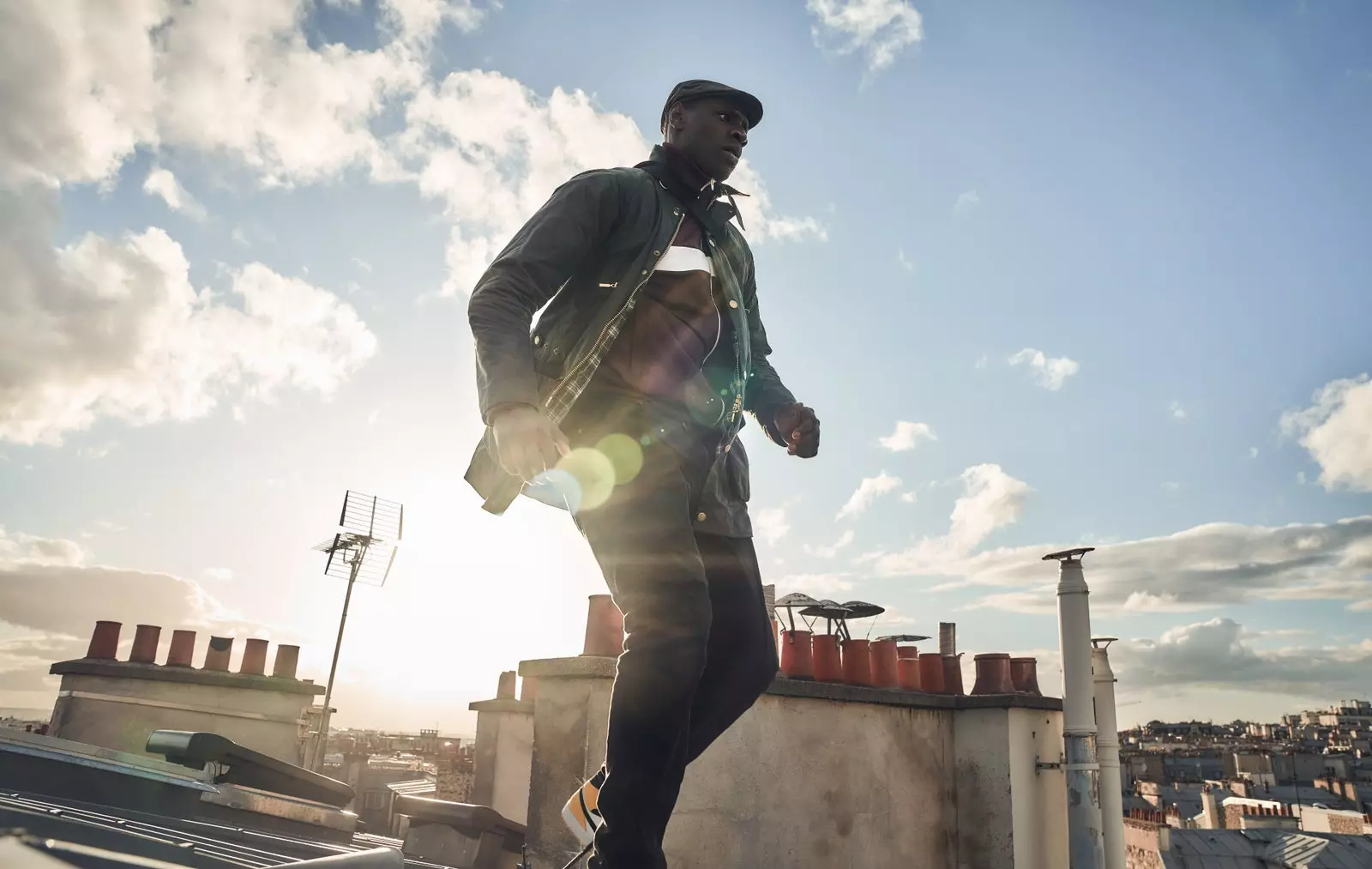
Omar Sy, protagonist of the series Lupine, on the rooftops of Paris.
With the actor Omar Sy it happens as with Paris: the crush at first sight is more than guaranteed. From the first moment that we discover him in Untouchable, one of the most watched French films of all time, we fell in love with his natural elegance in front of the camera, his aesthetic grandeur (he is 1.90 cm tall) and his that charisma so typical of exceptionality (he is one of the favorite people in France and the City of the Seine, the most visited in the country).
Sensations that we have just recovered almost a decade later thanks to the Netflix series Lupine –of which the Frenchman is the protagonist– and that have irrevocably led us to fall in love with his new character on screen (the little one, this time). Exactly the same thing has happened to us with Paris and his never indifferent presence, the one that serves as the setting for the adventures of Assane Diop, a 21st-century gentleman-thief who find inspiration in the Arsene Lupin from the novels of Maurice Leblanc.
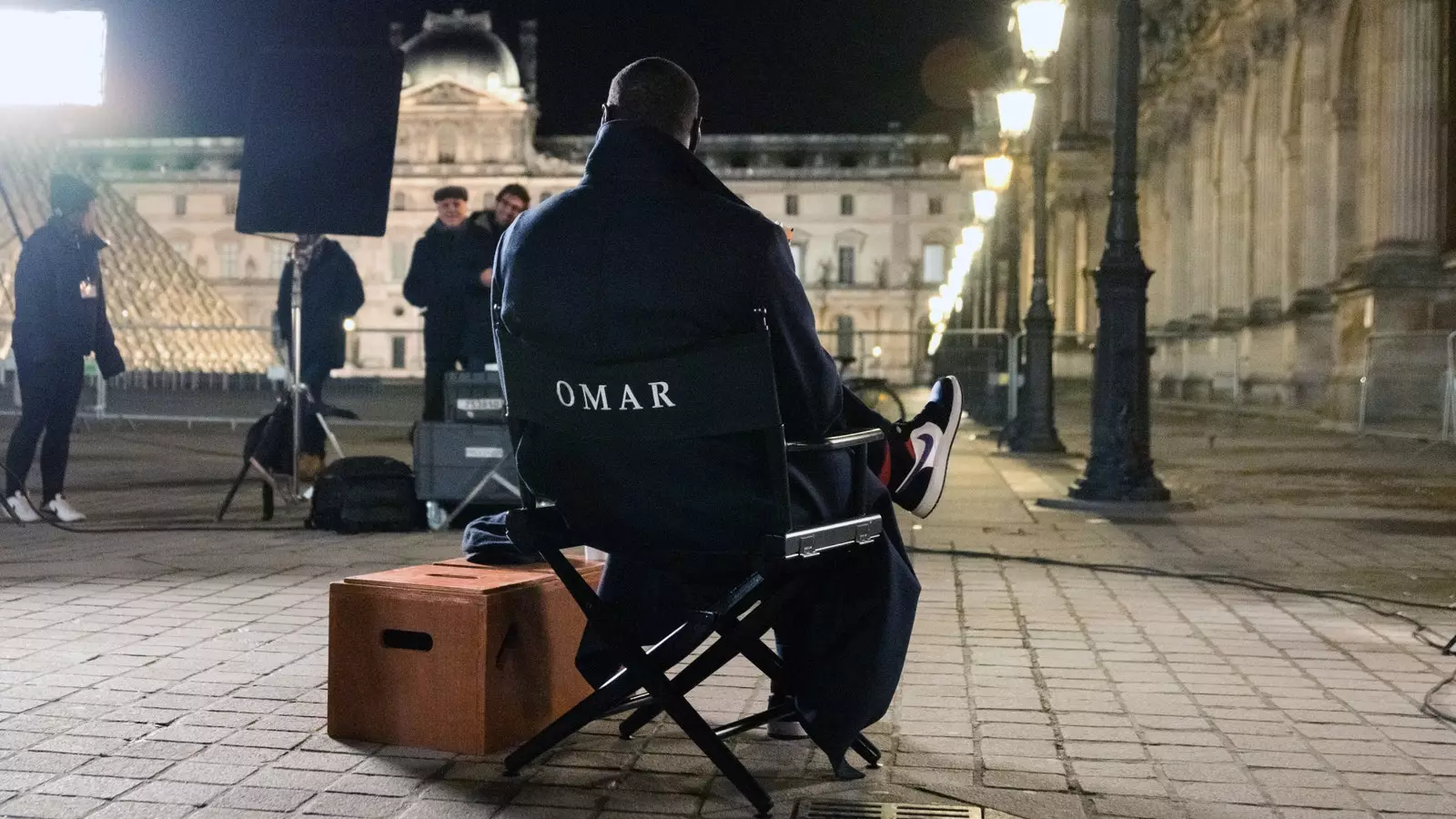
Omar Sy during filming in front of the Louvre and Ieoh Ming Pei's glass pyramid.
** THE LOUVRE MUSEUM AND ITS PYRAMID from him **
It is no secret (or spoiler) that the Louvre is of vital importance in the main plot of Lupin, in fact in the promotional poster of the series **Sy appears with the great glass pyramid of Ieoh Ming Pei in the background. **
The official data on this pyramidal structure solved in an ultra-technical way by the Pritzker Prize for architecture -and which serves as the entrance to the museum through the courtyard of Cour Napoléon– are that it is 22 meters high, with a base of 30 meters on each side and that It is made up of nearly 800 glass rhombuses and triangles. The literature and not a few internet pages assure, however, that there are actually 666 panels in total, hence has been nicknamed on occasion as the "diabolical pyramid of Mitterrand", President of the Republic who had it built in the 1980s, not without little opposition and media and social discontent.
Paul Heyer, in his book American Architecture: Ideas and Ideologies in the Late Twentieth Century, explains how I. M. Pei devised a pyramid built with the same proportions as that of Cheops in Egypt.
This will not be the only pyramid –of the five that the Parisian museum has– that will appear before our eyes in the Lupine series (and we leave the intrigue 'suspended' there so as not to spoil the first chapter for anyone).
The exhibition halls of the Louvre are visited (and perfectly studied) by Assane Diop, who is framed by the gigantic painting of The Wedding at Cana by Veronese stopping to observe the Gioconda in the Estates room, to which the Mona Lisa returned after spending three months in the Médicis Gallery due to renovation works in 2019.
The emergency exits of the museum, also used as a stage in the first chapter, are less showy, but very necessary for the escape.
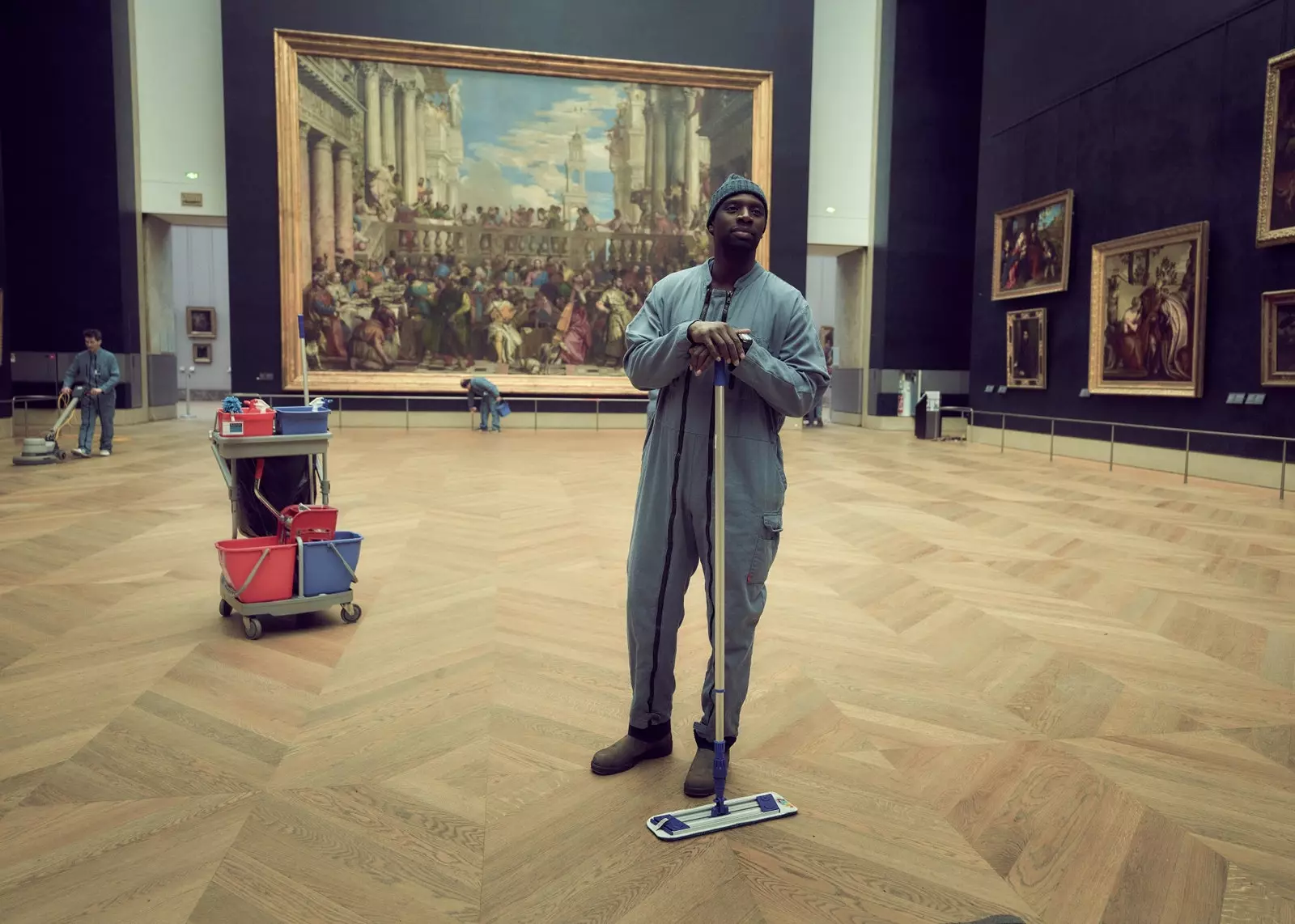
Assane Diop's character observes the Gioconda with Veronese's painting of The Marriage at Cana behind him.
ROOFTOPS, GARDENS AND BRIDGES
On another occasion The thief must sneak across the rooftops of Paris and, although for a few seconds you can see in the distance the Basilique du Sacré-Coeur de Montmartre, the dome of the Palais National des Invalides and even the Eiffel Tower itself, they are the chimneys and the perfect alignment of the buildings designed by Georges-Eugène Haussmann the ones that really call our attention. In the same way the sloping zinc mansard roofs are recognizable, so characteristic of the nineteenth-century Haussmanian architectural style.
Baron Haussmann also signs the bridge of the Parc Monceau that we can see the third chapter of Lupine (in a flashback in which the protagonist travels to the past to remember how he fell in love with his ex-wife in fiction, Claire, played by the French actress Ludivine Sagnier). The park, designed in the 18th century in the English style by the landscape designer Louis de Carmontelle, still keeps some of the fanciful constructions of the time, such as the famous Naumaquia, a pond surrounded by Corinthian columns where naval battles were once staged as a show.
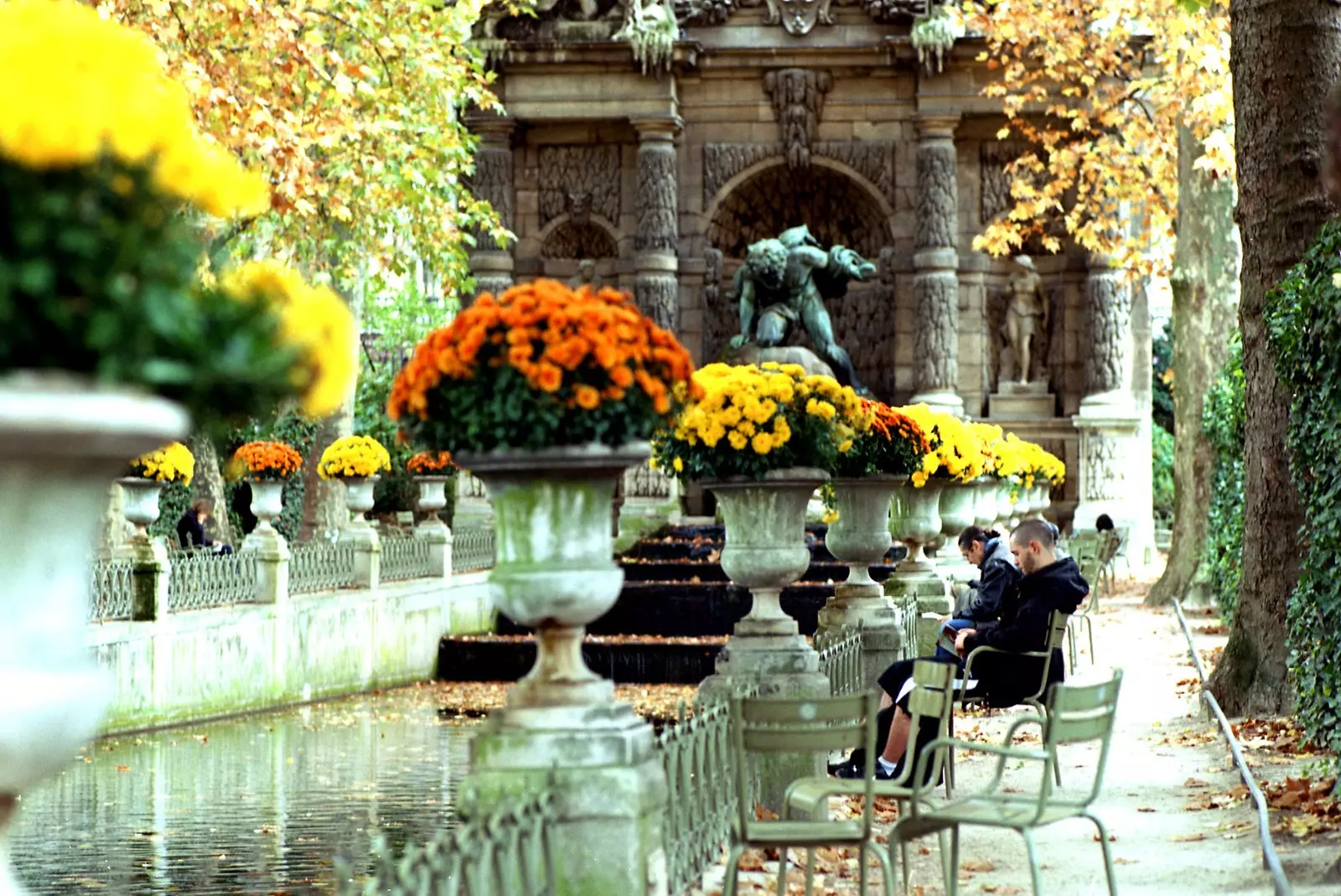
The Luxembourg gardens are perfect for a secret meeting.
And not one, but many Assane Diop (pure Maurice Leblanc style) are chased by the police in the Luxembourg gardens, inspired by the Florentine Boboli Gardens at the request of Queen Marie de Médicis, who decided to abandon the Louvre Palace and ordered the construction of the Luxembourg Palace (current Senate of France) after her husband, King Henry IV, was assassinated in the streets of Paris in 1610.
It is not a bridge, but a footbridge, specifically that of Mornay over the Canal de Saint Martin, where Claire confesses to Assane early in her relationship that she is pregnant with her child, Raoul. A location, on the old mercantile port of Arsenal, which at first may not seem idyllic, but which soon reveals us in the distance the Illuminated profile of the July Column in the Place de la Bastille.
And almost without locks (of love) appears the Passerelle des Arts –which connects the Institute of France with the Cour Carré of the Louvre–, from which the walkway takes its name, since the museum was previously known as the Palace of Arts. During a brief walk along what was the first metallic footbridge in Paris, Assane gives her son "my inheritance, my method, my path", that is, the book by Maurice Leblanc that her father had given him as a child.
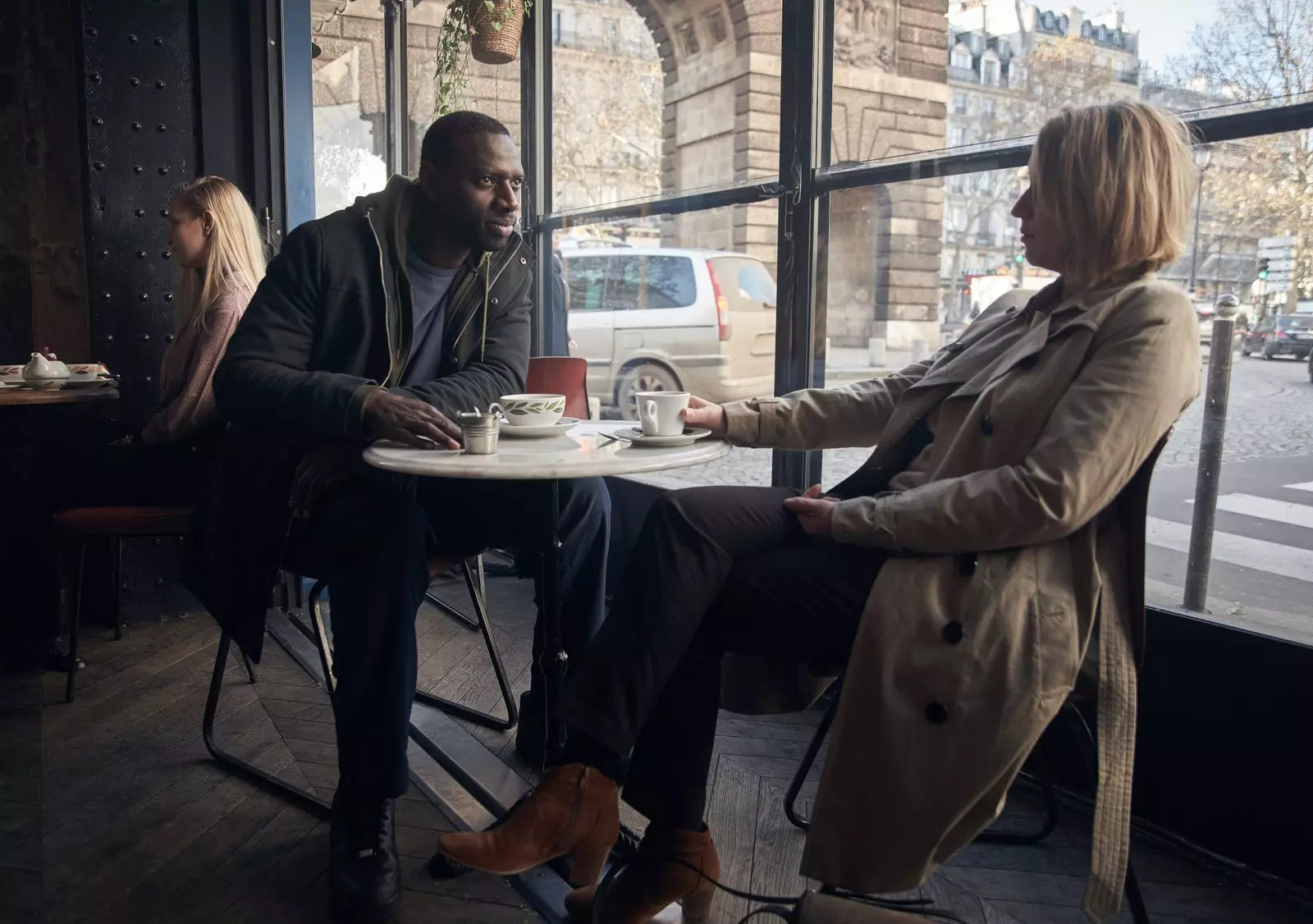
Assane and Claire in a restaurant overlooking the Porte de Saint Martin.
ARRONDISSEMENTS, DISCOVERING DISTRICTS
We have tracked white-collar thief Assane Diop through the central I District, where the Louvre museum is located. He has escaped from the Luxembourg Gardens in the 6th Arrondissement and, in Monceau Park, he has traveled back in time and also to the 8th Arrondissement. Without forgetting that he has risen to the heights on the Rue d'Abbeville, in the X Arrondissement through which the Canal de Saint Martin runs and in which Lupin's protagonist and his ex-wife meet in a restaurant overlooking the Porte de Saint Martin.
Farther north, to the flea market in Paris, in the 18e Arrondissement, they have gone to record the scenes that take place in the antique dealer of Benjamin Ferel, eventual accomplice and friend of the protagonist (played by the actor Antoine Gouy).
Regarded as the world's largest and oldest second-hand and antiques market, the Saint-Ouen market is actually made up of more than a dozen markets, and one of them is the Marché Biron, where the luxurious and expensive jewel with which Lupin's plot begins fits perfectly.
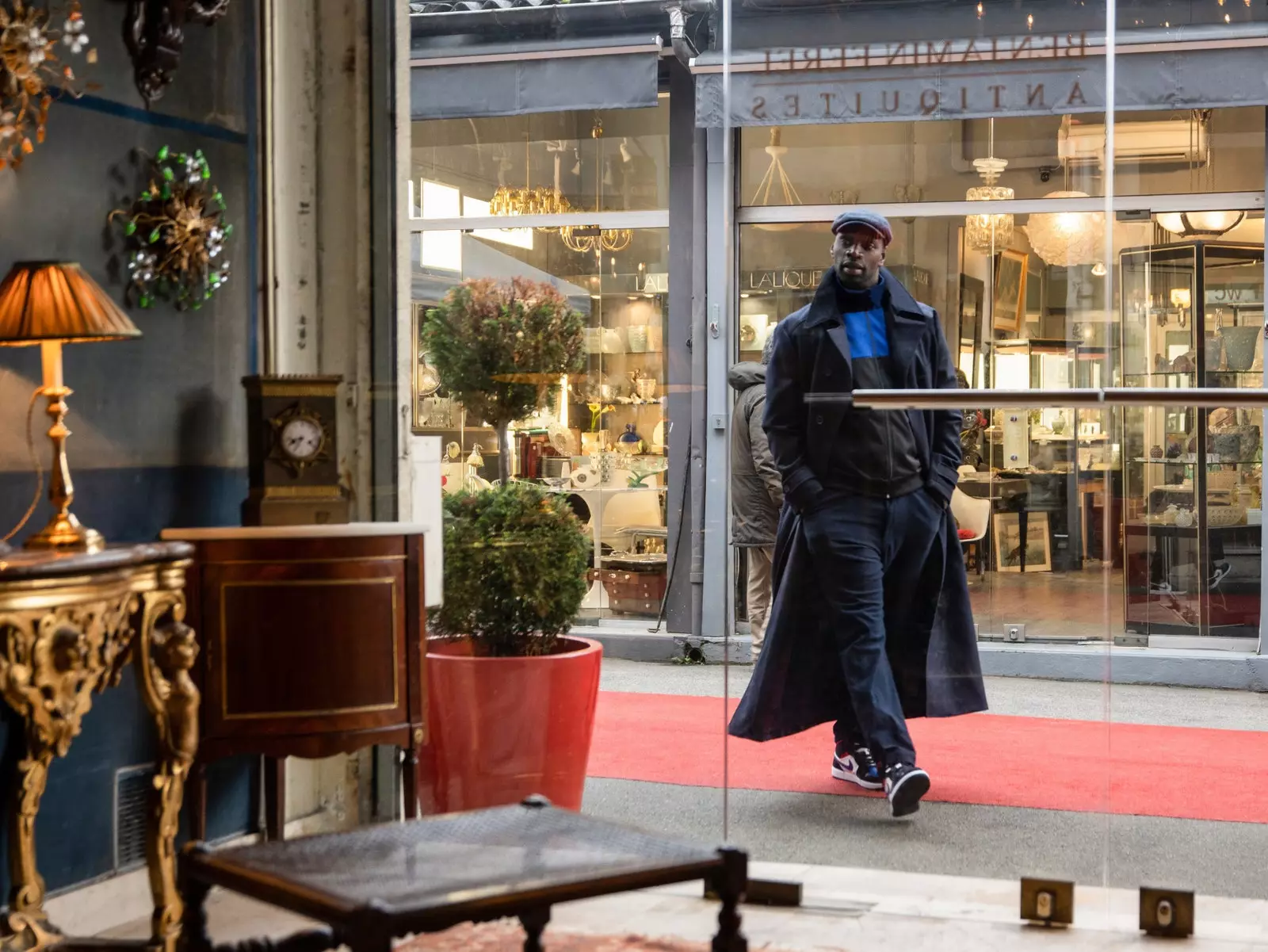
Assane Diop entering the antique shop of his friend Benjamin Ferel, in Marché Biron.
MUSEUM AND HOTELS
The mansion of the Pellegrini family, in which Assane Diop's father worked and where the conflict yet to be resolved originated (we will have to wait for the already confirmed second season of Lupin), it is actually the MAD - Musée Nissim de Camondo. This hôtel particulier, whose architecture is inspired by the Petit Trianon of Versailles, houses an interesting collection of French decorative art from the second half of the 18th century that includes furniture and objects from the reigns of Louis XV and Louis XVI.
Other hotels that appear in the series are the Hôtel de Ville de Paris (seat of the Paris municipality) and the luxurious Le Meurice (the first in Paris to have a private bathroom in every room and suite), whose gastronomic direction is in charge of the famous chef Alain Ducasse.
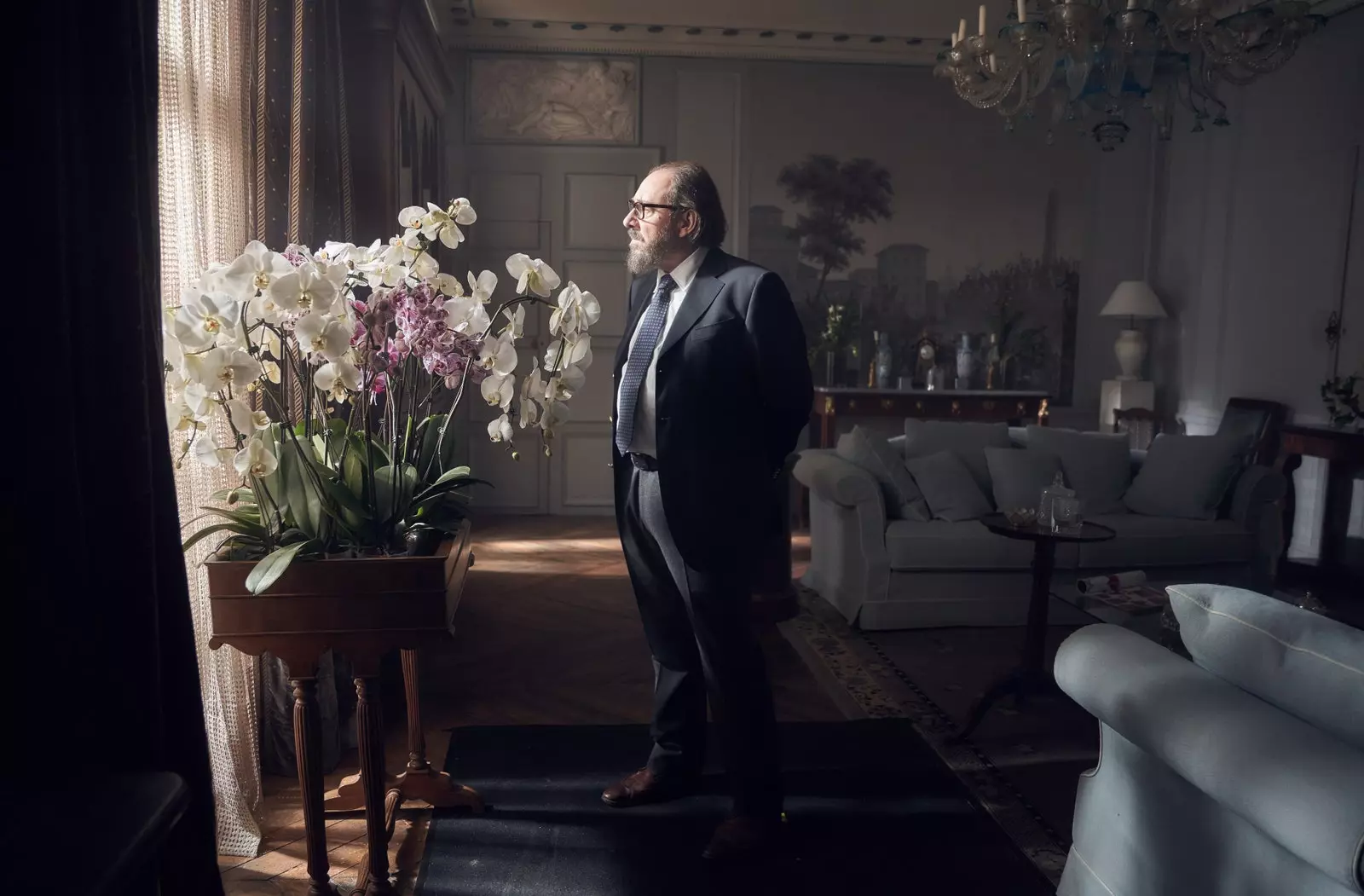
The Pellegrini family mansion is actually the MAD - Musée Nissim de Camondo.
OUTSIDE THE ÎLE DE LA CITÉ
For a very special reason (and another commemorative) travel to Normandy by train Assane, Claire and Raoul. Specifically until Étretat, location where the first season of Lupine ends, which is already one of the most watched Netflix series in the history of the platform.
In this French seaside town, known for its cliffs, so many times immortalized by impressionist artists, is the Le Clos Lupin museum, since the writer Maurice Leblanc lived much of his life in this Anglo-Norman mansion that today welcomes the visitor with a tour full of secret clues with which to discover the best-known gentleman-thief in France... and now also the whole world thanks to the Netflix series.
